
- Discussions
- Advertising

#4299. Book Reviewer
Lesson Plan Title: Book Reviewer Concept / Topic To Teach: Understand and comprehend as they read a book. The student will be able to write and understand how to do a basic book review. Standards Addressed: 3.4 The student will use strategies to read a variety of fiction and nonfiction materials. a) Preview and use text formats. b) Set a purpose for reading. c) Apply meaning clues, language structure, and phonetic strategies. d) Use context to clarify meaning of unfamiliar words. e) Read fiction and nonfiction fluently and accurately. f) Reread and self-correct when necessary. General Goal(s): Reading and Book Reviews The student will read a book of their choice. They will then learn how to use and complete a book reviewer worksheet so that other students who want to find out what the book is about can go to this work sheet and know what it is about. Specific Objectives: The student will use strategies to read a variety of fiction and nonfiction materials. g) Preview and use text formats. h) Set a purpose for reading. i) Apply meaning clues, language structure, and phonetic strategies. j) Apply these skills in a book review for a fellow student. Required Materials: � A book that the student/s have read. � Pencil � Clip Board � Book Reviewer Paper � Sheet Protector Anticipatory Set (Lead-In): � Read Book: Annie's Pet by: Barbara Brenner � Ask students questions to spark their interest such as: 1) What was Annie looking to buy in the story? 2) How much money did she have in order to buy the pet that she wanted? 3) What item did she buy that was not a very good choice? 4) What two animals did Annie want to buy, but were not for sale? 5) What kind of pet did she get in the end? � Have students go back to their own desks and re-read the book they chose. � Have them come up with 5 questions that they could ask about the story and write them down on a separate sheet of paper. Step-By-Step Procedures: 1. Read Annie's Pet to all students on the carpet and show them how to write out their questions using chart paper. 2. Students will go back to their seats and re-read the story that they chose to do a book review on. 3. The students will then write down at least 5 questions on a piece of paper and answer them. They will be using this in order to do the book review as a tool to remember what happened in the story. 4. Once the students are done with their questions they will get a clip board with the Book Reviewer worksheet on it and start filling it out and drawing pictures in where they are needed. 5. We will come together on the carpet once everything is filled out and completed and briefly share what their book was about. 6. The students will then put their finished book review in a sheet protector and then into a binder where any student could look it up to find out what that particular book is about. Kinesthetic Learners: They will be able to share what their book was about by showing what they book looks like. Visual Learners: As I go along with the lesson I will model everything as I go. For example, with the book reviewer worksheet I will make a transparency of the worksheet so that they will know how to fill it out. Plan For Independent Practice: Have the students come up with the questions and write them down on their own. They will also be picking a book of their choice on their own. Closure (Reflect Anticipatory Set): � Students will come together and share a little bit about their story and review. � Students will talk about how the assignment went. � I will share my book Annie's Pet and my entire review of this book. Assessment Based On Objectives: � The student will pick a book on their reading level. � They will write at least 5 questions about the book. � The student will fill out a Book Reviewer sheet and turn it in with the sheet protector (given by teacher). Adaptations (For Students With Learning Disabilities): � Help them pick out a good book for that student. � Help them come up with 5 questions. � Help them fill out their Book Reviewer sheet so that they can share their sheet with their fellow classmates. Extensions (For Gifted Students): I would have these students do a compare and contrast book review with two different books. Possible Connections To Other Subjects: Reading comprehension (compare and contrast), Use of Grammar (when writing review), Good citizens (having to share information with other).
- International
- Education Jobs
- Schools directory
- Resources Education Jobs Schools directory News Search

Book review template KS2 Guided & blank.
Subject: English
Age range: 7-11
Resource type: Worksheet/Activity
Last updated
20 January 2015
- Share through email
- Share through twitter
- Share through linkedin
- Share through facebook
- Share through pinterest

Creative Commons "NoDerivatives"
Your rating is required to reflect your happiness.
It's good to leave some feedback.
Something went wrong, please try again later.
emmalou19821
Just what I'm looking for.
Empty reply does not make any sense for the end user
Anon64061053397389580
Easy to use it.
History-buff
Glad to hear that you found this useful
One of the better book reviews on tes. Thought provoking questions and helps first time reviewers write a detailed book review.
Perfect, thank you!
Glad to see that you found this useful
Report this resource to let us know if it violates our terms and conditions. Our customer service team will review your report and will be in touch.
Not quite what you were looking for? Search by keyword to find the right resource:

Book Review Writing
Introduction.
If you love to read, at some point you will want to share a book you love with others. You may already do this by talking about books with friends. If you want to share your ideas with more people than your circle of friends, the way you do that is by writing a review. By publishing the reviews you write, you can share your ideas about books with other readers around the world.
It's natural for young readers to confuse book reviews with book reports, yet writing a book review is a very different process from writing a book report. Book reports focus on the plot of the book. Frequently, the purpose of book reports is to demonstrate that the books were read, and they are often done for an assignment.
A book review is a totally different task. A book review's purpose is to help people decide whether or not the book would interest them enough to read it. Reviews are a sneak peek at a book, not a summary. Like wonderful smells wafting from a kitchen, book reviews lure readers to want to taste the book themselves.
This guide is designed to help you become a strong book reviewer, a reader who can read a book and then cook up a review designed to whet the reading appetites of other book lovers.
Form: What should the review look like?
How long should it be.
The first question we usually ask when writing something is "How long should it be?" The best answer is "As long as it takes," but that's a frustrating answer. A general guideline is that the longer the book, the longer the review, and a review shouldn't be fewer than 100 words or so. For a long book, the review may be 500 words or even more.
If a review is too short, the review may not be able to fulfill its purpose. Too long, and the review may stray into too much plot summary or lose the reader's interest.
The best guide is to focus less on how long to write and more on fulfilling the purpose of the review.
How Do You Create A Title?
The title of the review should convey your overall impression and not be overly general. Strong titles include these examples:
- "Full of action and complex characters"
- "A nail-biter that will keep you up all night"
- "Beautiful illustrations with a story to match"
- "Perfect for animal lovers"
Weak titles may look like this:
- "Really good book"
- "Three stars"
- "Pretty good"
- "Quick read"
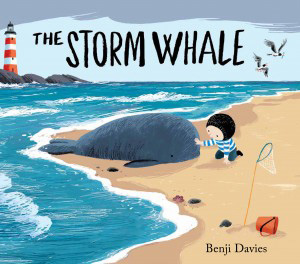
How Should It Begin?
Although many reviews begin with a short summary of the book (This book is about…), there are other options as well, so feel free to vary the way you begin your reviews.
In an introductory summary, be careful not to tell too much. If you retell the entire story, the reader won't feel the need to read it him/herself, and no one appreciates a spoiler (telling the end). Here are some examples of summaries reviewers from The New York Times have written:
"A new picture book tells a magically simple tale of a lonely boy, a stranded whale and a dad who rises to the occasion."
"In this middle-grade novel, a girl finds a way forward after the loss of her mother."
"Reared by ghosts, werewolves and other residents of the hillside cemetery he calls home, an orphan named Nobody Owens wonders how he will manage to survive among the living having learned all his lessons from the dead. And the man Jack — who killed the rest of Nobody's family — is itching to finish the job."
"In vivid poems that reflect the joy of finding her voice through writing stories, an award-winning author shares what it was like to grow up in the 1960s and 1970s in both the North and the South." Other ways to begin a review include:
- Quote: A striking quote from the book ("It was a bright cold day in April, and the clocks were striking thirteen.") can make for a powerful beginning. This quote begins George Orwell's novel 1984 .
- Background: What makes this book important or interesting? Is the author famous? Is it a series? This is This is how Amazon introduces Divergent : "This first book in Veronica Roth's #1 New York Times bestselling Divergent trilogy is the novel the inspired the major motion picture."
- Interesting Fact: For nonfiction books in particular, an interesting fact from the book may create a powerful opening for a review. In this review of The Middle East by Philip Steele, Zander H. of Mid-America Mensa asks, "Did you know that the Saudi Arabia's Rub' al-Khali desert reaches temperatures of 140 degrees Fahrenheit in the day and plummets to the freezing point at night?"
- Explanation of a term: If a word or phrase in the book or title is confusing or vitally important to understand, you may wish to begin the review explaining that term.
Process: What should I write about?
Deciding what to say about the book can be challenging. Use the following ideas as a guide, but remember that you should not put all of this into a single review — that would make for a very long review! Choose the things that fit this particular book best.
General Information What the reader ought to know
- What kind of book is it? (Picture book? Historical fiction? Nonfiction? Fantasy? Adventure?)
- Does the book belong to a series?
- How long is the book? Is it an easy or a challenging read?
- Is there anything that would be helpful for the reader to know about the author? For instance, is the author an expert in the field, the author of other popular books, or a first-time author?
- How does the book compare to other books on the same topic or in the same genre?
- Is the book written in a formal or informal style? Is the language remarkable in any way?
- What ages is the book geared to?
- Is the book written in normal prose? If it is written in poetic form, does it rhyme?
Plot What happens?
Writing about the plot is the trickiest part of a review because you want to give the reader a feel for what the book is about without spoiling the book for future readers. The most important thing to remember is that you must never give away the ending. No one likes a spoiler.
One possibility for doing this is to set up the premise (A brother and a sister find themselves lost in the woods at the mercy of an evil witch. Will they be able to outsmart her and escape?). Another possibility is to set up the major conflict in the book and leave it unresolved (Sometimes the waiting is the hardest part or He didn't know what he stood to lose or Finding your purpose in life can be as easy as finding a true friend.)
Try to avoid using the tired phrase "This book is about…" Instead, just jump right in (The stuffed rabbit wanted more than anything to live in the big old house with the wild oak trees.)
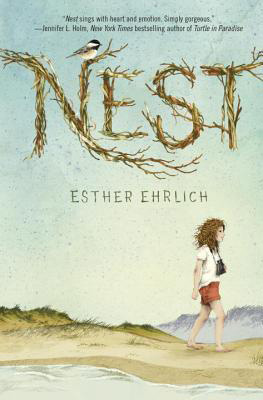
Characters Who lives in the book?
Reviews should answer questions about the characters in fiction books or non-fiction books about people. Some possible questions to answer include:
- Who are the main characters? Include the protagonist and antagonist.
- What makes them interesting?
- Do they act like real people act or are they too good or too evil to be believable?
- Are they human?
- What conflicts do they face?
- Are they likeable or understandable?
- How do they connect with each other?
- Do they appear in other books?
- Could you relate to any of the characters in the story?
- What problems did the main characters face?
- Who was your favorite character, and why?
- We learn about characters from things they do and say, as well as things other characters say about them. You may wish to include examples of these things.
Theme What is the book about at its heart?
What is the book really about? This isn't the plot, but rather the ideas behind the story. Is it about the triumph of good over evil or friendship or love or hope? Some common themes include: change, desire to escape, facing a challenge, heroism, the quest for power, and human weaknesses.
Sometimes a book will have a moral — a lesson to learn. If so, the theme is usually connected to that moral. As you write about the theme, try to identify what makes the book worth reading. What will the reader think about long after the book is finished? Ask yourself if there any particular lines in the book that strike you as meaningful.
Setting Where are we?
The setting is the time and place the story occurs. When you write about the setting in a review, include more than just the location. Some things to consider:
- Is the book set in the past, present or future?
- Is it set in the world we know or is it a fantastical world?
- Is it mostly realistic with elements of fantasy (animals that can talk, for example)?
- Is the setting unclear and fuzzy, or can you easily make the movie in your mind?
- How much does the author draw you into the setting and how does s/he accomplish that?
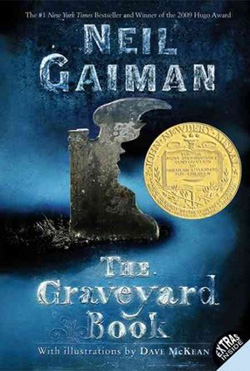
Opinion & Analysis What do you really think?
This is where the reviewer shares his/her reactions to the book that go beyond the essential points described above. You may spend half of the review on this section. Some possible questions to address include:
- Why do you think other readers would enjoy it? Why did you enjoy it (if you did) or why didn't you (if you didn't).
- What ages or types of readers do you think would like the book?
- How does it compare with other books that are in the same genre or by the same author?
- Does the book engage your emotions? If a book made you laugh or cry or think about it for days, be sure to include that.
- What do you like or dislike about the author's writing style? Is it funny? Is it hard to follow? Is it engaging and conversational in tone?
- How well do you think the author achieved what s/he was going for in the writing of the book? Do you think you felt what the author was hoping you would feel?
- Did the book feel complete, or did it feel as though key elements were left out?
- How does the book compare to other books like it you've read?
Are there parts that are simply not believable, even allowing for the reader's understanding that it is fiction or even fantasy?
- Are there mistakes?
- Would you describe the book as for entertainment, self-improvement, or information?
- What was your favorite part of the book?
- Would you have done anything differently had you been the author?
- Would any reader enjoy this book? If not, to what ages or type of reader would it appeal?
Special situations: Nonfiction and young reviewers
Some of the tips and ideas above work best for fiction, and some of it is a little too complicated for very young reviewers.
Nonfiction What to do if it's real
When reviewing a book of nonfiction, you will want to consider these questions:
- What was the author's purpose in writing the book? Did the author accomplish that purpose?
- Who is the target audience for the book?
- What do you think is the book's greatest value? What makes it special or worthwhile?
- Are the facts shared accurate?
- Is the book interesting and hold your attention?
- Would it be a useful addition to a school or public library?
- If the book is a biography or autobiography, how sympathetic is the subject?
- Is it easy to understand the ideas?
- Are there extra features that add to the enjoyment of the book, such as maps, indexes, glossaries, or other materials?
- Are the illustrations helpful?
Young Reviewers Keeping it simple
Reviewing a book can be fun, and it's not hard at all. Just ask yourself these questions:
- What is the book about? You don't need to tell the whole story over — just give an idea of what it's about.
- Do you think other people would like it?
- Did you think it was funny or sad?
- Did you learn something from the book?
- l Did you think it was interesting?
- Would you want to read it again?
- Would you want to read other books by the same author or about the same subject?
- What was your favorite part?
- Did you like the pictures?
Remember! Don't give away the ending. Let's keep that a surprise.
General Tips & Ideas
Use a few quotes or phrases (keep them short) from the book to illustrate the points you make about the book. If there are illustrations, be sure to comment on those. Are they well done? Has the illustrator done other well-known books?
Make sure you include a conclusion to the review — don't leave it hanging. The conclusion can be just one sentence (Overall, this book is a terrific choice for those who…).
You can use the transition word handout at the end of the Writer's Toolbox to find ideas for words to connect the ideas in your review. If you would like to read some well-written reviews, look for reviews of books for young people at The New York Times or National Public Radio .
Rating Books How to award stars?
Most places you post reviews ask you to rate the book using a star system, typically in a range of from one to five stars. In your rating, you should consider how the book compares to other books like it. Don't compare a long novel to a short poetry book — that's not a valid comparison.
It's important to remember that it's not asking you to only give five stars to the very best books ever written.
- 5 Stars: I'm glad I read it or I loved it (this doesn't mean it was your favorite book ever).
- 4 Stars: I like it. It's worth reading.
- 3 Stars: It wasn't very good.
- 2 Stars: I don't like it at all.
- 1 Star: I hate it.

How to Write a Book Review: The Ultimate Guide
WHAT IS A BOOK REVIEW?

Traditionally, book reviews are evaluations of a recently published book in any genre. Usually, around the 500 to 700-word mark, they briefly describe a text’s main elements while appraising the work’s strengths and weaknesses. Published book reviews can appear in newspapers, magazines, and academic journals. They provide the reader with an overview of the book itself and indicate whether or not the reviewer would recommend the book to the reader.
WHAT IS THE PURPOSE OF A BOOK REVIEW?
There was a time when book reviews were a regular appearance in every quality newspaper and many periodicals. They were essential elements in whether or not a book would sell well. A review from a heavyweight critic could often be the deciding factor in whether a book became a bestseller or a damp squib. In the last few decades, however, the book review’s influence has waned considerably, with many potential book buyers preferring to consult customer reviews on Amazon, or sites like Goodreads, before buying. As a result, book review’s appearance in newspapers, journals, and digital media has become less frequent.
WHY BOTHER TEACHING STUDENTS TO WRITE BOOK REVIEWS AT ALL?
Even in the heyday of the book review’s influence, few students who learned the craft of writing a book review became literary critics! The real value of crafting a well-written book review for a student does not lie in their ability to impact book sales. Understanding how to produce a well-written book review helps students to:
● Engage critically with a text
● Critically evaluate a text
● Respond personally to a range of different writing genres
● Improve their own reading, writing, and thinking skills.
Not to Be Confused with a Book Report!
WHAT’S THE DIFFERENCE BETWEEN A BOOK REVIEW AND A BOOK REPORT?

While the terms are often used interchangeably, there are clear differences in both the purpose and the format of the two genres. Generally speaking, book reports aim to give a more detailed outline of what occurs in a book. A book report on a work of fiction will tend to give a comprehensive account of the characters, major plot lines, and themes in the book. Book reports are usually written around the K-12 age range, while book reviews tend not to be undertaken by those at the younger end of this age range due to the need for the higher-level critical skills required in writing them. At their highest expression, book reviews are written at the college level and by professional critics.
Learn how to write a book review step by step with our complete guide for students and teachers by familiarizing yourself with the structure and features.
BOOK REVIEW STRUCTURE
ANALYZE Evaluate the book with a critical mind.
THOROUGHNESS The whole is greater than the sum of all its parts. Review the book as a WHOLE.
COMPARE Where appropriate compare to similar texts and genres.
THUMBS UP OR DOWN? You are going to have to inevitably recommend or reject this book to potential readers.
BE CONSISTENT Take a stance and stick with it throughout your review.
FEATURES OF A BOOK REVIEW
PAST TENSE You are writing about a book you have already read.
EMOTIVE LANGUAGE Whatever your stance or opinion be passionate about it. Your audience will thank you for it.
VOICE Both active and passive voice are used in recounts.
A COMPLETE UNIT ON REVIEW AND ANALYSIS OF TEXTS

⭐ Make MOVIES A MEANINGFUL PART OF YOUR CURRICULUM with this engaging collection of tasks and tools your students will love. ⭐ All the hard work is done for you with NO PREPARATION REQUIRED.
This collection of 21 INDEPENDENT TASKS and GRAPHIC ORGANIZERS takes students beyond the hype, special effects and trailers to look at visual literacy from several perspectives offering DEEP LEARNING OPPORTUNITIES by watching a SERIES, DOCUMENTARY, FILM, and even VIDEO GAMES.
ELEMENTS OF A BOOK REVIEW
As with any of the writing genres we teach our students, a book review can be helpfully explained in terms of criteria. While there is much to the ‘art’ of writing, there is also, thankfully, a lot of the nuts and bolts that can be listed too. Have students consider the following elements before writing:
● Title: Often, the title of the book review will correspond to the title of the text itself, but there may also be some examination of the title’s relevance. How does it fit into the purpose of the work as a whole? Does it convey a message or reveal larger themes explored within the work?
● Author: Within the book review, there may be some discussion of who the author is and what they have written before, especially if it relates to the current work being reviewed. There may be some mention of the author’s style and what they are best known for. If the author has received any awards or prizes, this may also be mentioned within the body of the review.
● Genre: A book review will identify the genre that the book belongs to, whether fiction or nonfiction, poetry, romance, science-fiction, history etc. The genre will likely tie in, too with who the intended audience for the book is and what the overall purpose of the work is.
● Book Jacket / Cover: Often, a book’s cover will contain artwork that is worthy of comment. It may contain interesting details related to the text that contribute to, or detract from, the work as a whole.
● Structure: The book’s structure will often be heavily informed by its genre. Have students examine how the book is organized before writing their review. Does it contain a preface from a guest editor, for example? Is it written in sections or chapters? Does it have a table of contents, index, glossary etc.? While all these details may not make it into the review itself, looking at how the book is structured may reveal some interesting aspects.
● Publisher and Price: A book review will usually contain details of who publishes the book and its cost. A review will often provide details of where the book is available too.

BOOK REVIEW KEY ELEMENTS
As students read and engage with the work they will review, they will develop a sense of the shape their review will take. This will begin with the summary. Encourage students to take notes during the reading of the work that will help them in writing the summary that will form an essential part of their review. Aspects of the book they may wish to take notes on in a work of fiction may include:
● Characters: Who are the main characters? What are their motivations? Are they convincingly drawn? Or are they empathetic characters?
● Themes: What are the main themes of the work? Are there recurring motifs in the work? Is the exploration of the themes deep or surface only?
● Style: What are the key aspects of the writer’s style? How does it fit into the wider literary world?
● Plot: What is the story’s main catalyst? What happens in the rising action? What are the story’s subplots?
A book review will generally begin with a short summary of the work itself. However, it is important not to give too much away, remind students – no spoilers, please! For nonfiction works, this may be a summary of the main arguments of the work, again, without giving too much detail away. In a work of fiction, a book review will often summarise up to the rising action of the piece without going beyond to reveal too much!

The summary should also provide some orientation for the reader. Given the nature of the purpose of a review, it is important that students’ consider their intended audience in the writing of their review. Readers will most likely not have read the book in question and will require some orientation. This is often achieved through introductions to the main characters, themes, primary arguments etc. This will help the reader to gauge whether or not the book is of interest to them.
Once your student has summarized the work, it is time to ‘review’ in earnest. At this point, the student should begin to detail their own opinion of the book. To do this well they should:
i. Make It Personal
Often when teaching essay writing we will talk to our students about the importance of climbing up and down the ladder of abstraction. Just as it is helpful to explore large, more abstract concepts in an essay by bringing it down to Earth, in a book review, it is important that students can relate the characters, themes, ideas etc to their own lives.
Book reviews are meant to be subjective. They are opinion pieces, and opinions grow out of our experiences of life. Encourage students to link the work they are writing about to their own personal life within the body of the review. By making this personal connection to the work, students contextualize their opinions for the readers and help them to understand whether the book will be of interest to them or not in the process.
ii. Make It Universal
Just as it is important to climb down the ladder of abstraction to show how the work relates to individual life, it is important to climb upwards on the ladder too. Students should endeavor to show how the ideas explored in the book relate to the wider world. The may be in the form of the universality of the underlying themes in a work of fiction or, for example, the international implications for arguments expressed in a work of nonfiction.
iii. Support Opinions with Evidence
A book review is a subjective piece of writing by its very nature. However, just because it is subjective does not mean that opinions do not need to be justified. Make sure students understand how to back up their opinions with various forms of evidence, for example, quotations, statistics, and the use of primary and secondary sources.
EDIT AND REVISE YOUR BOOK REVIEW

As with any writing genre, encourage students to polish things up with review and revision at the end. Encourage them to proofread and check for accurate spelling throughout, with particular attention to the author’s name, character names, publisher etc.
It is good practice too for students to double-check their use of evidence. Are statements supported? Are the statistics used correctly? Are the quotations from the text accurate? Mistakes such as these uncorrected can do great damage to the value of a book review as they can undermine the reader’s confidence in the writer’s judgement.
The discipline of writing book reviews offers students opportunities to develop their writing skills and exercise their critical faculties. Book reviews can be valuable standalone activities or serve as a part of a series of activities engaging with a central text. They can also serve as an effective springboard into later discussion work based on the ideas and issues explored in a particular book. Though the book review does not hold the sway it once did in the mind’s of the reading public, it still serves as an effective teaching tool in our classrooms today.

Teaching Resources
Use our resources and tools to improve your student’s writing skills through proven teaching strategies.
BOOK REVIEW GRAPHIC ORGANIZER (TEMPLATE)

101 DIGITAL & PRINT GRAPHIC ORGANIZERS FOR ALL CURRICULUM AREAS

Introduce your students to 21st-century learning with this GROWING BUNDLE OF 101 EDITABLE & PRINTABLE GRAPHIC ORGANIZERS. ✌ NO PREP REQUIRED!!! ✌ Go paperless, and let your students express their knowledge and creativity through the power of technology and collaboration inside and outside the classroom with ease.
Whilst you don’t have to have a 1:1 or BYOD classroom to benefit from this bundle, it has been purpose-built to deliver through platforms such as ✔ GOOGLE CLASSROOM, ✔ OFFICE 365, ✔ or any CLOUD-BASED LEARNING PLATFORM.
Book and Movie review writing examples (Student Writing Samples)
Below are a collection of student writing samples of book reviews. Click on the image to enlarge and explore them in greater detail. Please take a moment to both read the movie or book review in detail but also the teacher and student guides which highlight some of the key elements of writing a text review
Please understand these student writing samples are not intended to be perfect examples for each age or grade level but a piece of writing for students and teachers to explore together to critically analyze to improve student writing skills and deepen their understanding of book review writing.
We would recommend reading the example either a year above and below, as well as the grade you are currently working with to gain a broader appreciation of this text type .

BOOK REVIEW VIDEO TUTORIALS

OTHER GREAT ARTICLES RELATED TO BOOK REVIEWS

Transactional Writing

How to write a text response

How to Write a Compare and Contrast Essay


How to Write Excellent Expository Essays
Teach Starter, part of Tes Teach Starter, part of Tes
Search everything in all resources
Book Review Worksheet
Updated: 29 Aug 2023
A book review and summary card for comprehension learning.
Non-Editable: PDF
Pages: 1 Page
- Curriculum Curriculum: AUS V8, NSW, VIC, AUS V9
Years: 4 - 6
- V1 (pdf) Sign up to Plus
- V2 (pdf) Sign up to Plus
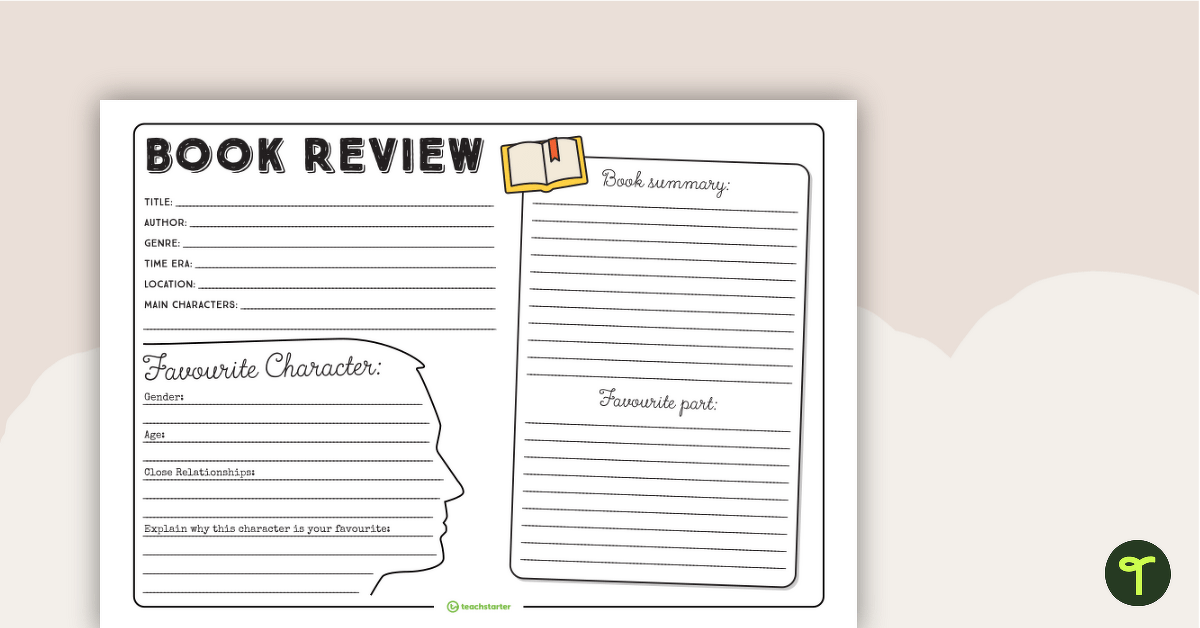
This t eaching resource is a one-page book review that can be used to summarise guided reading stories or be included as part of your class novel study. This resource is a great way to exercise students’ comprehension skills and allow them to review what they are reading.
Including reviews for ideas such as:
- Book information
- Favourite Character
- Book Summary
- Favourite part of the book
This worksheet can be used as a part of your literacy rotations or as a homework task.
Teach Starter Publishing
We create premium quality, downloadable teaching resources for primary/elementary school teachers that make classrooms buzz!
Write a review to help other teachers and parents like yourself. If you'd like to request a change to this resource, or report an error, select the corresponding tab above.
I wish the summary and favourite part was straight and not crooked.
Hi Ruby! We've uploaded a second version. Thank you!
Suggest a Change
Would you like something changed or customised on this resource? While our team makes every effort to complete change suggestions, we can't guarantee that every change will be completed.
Report an Error
Did you spot an error on this resource? Please let us know and we will fix it shortly.
Are you having trouble downloading or viewing this resource? Please try the following steps:
- Check that you are logged in to your account
- For premium resources, check that you have a paid subscription
- Check that you have installed Adobe Reader ( download here )
If you are still having difficulty, please visit the Teach Starter Help Desk or contact us .
You may also like
- Reading Comprehension →
- Templates →
- Book Review Templates →

Book Review Template
Encourage your students to share their thoughts on a story with this simple book review worksheet.
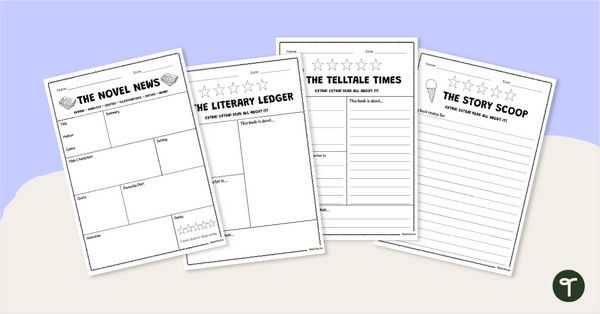
Newspaper Themed Book Report Templates
Read and write all about it with a fun newspaper-themed book review template.
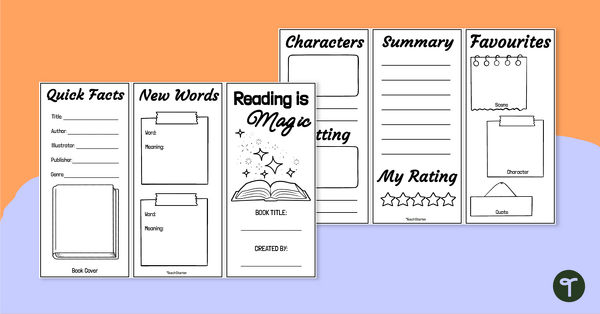
Reading Is Magic! Book Review Brochure Template
Download this book review brochure template based on the 2024 Book Week theme, “Reading Is Magic”.
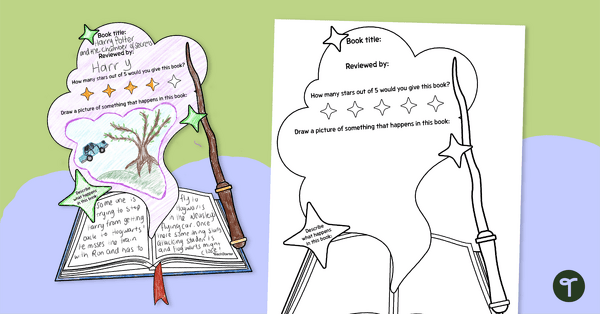
Magic-Themed Book Review Template
Create a display of student book reviews during Book Week 2024 with this magic-themed book review template for lower years students.

Bird Book Report Template
Explore the elements of a book with this fun and engaging book report template in the shape of a bird.
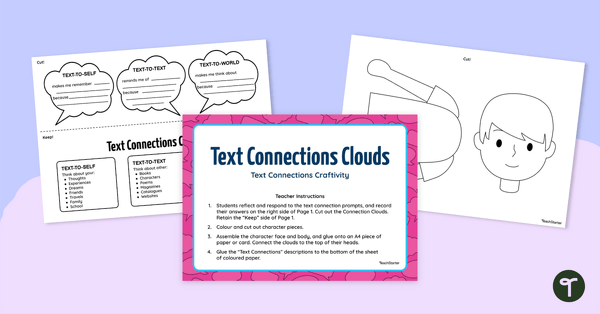
Text Connections Clouds Craftivity
Enjoy this fun literature craftivity with your students, which prompts them to answer comprehension questions for making personal connections to text.
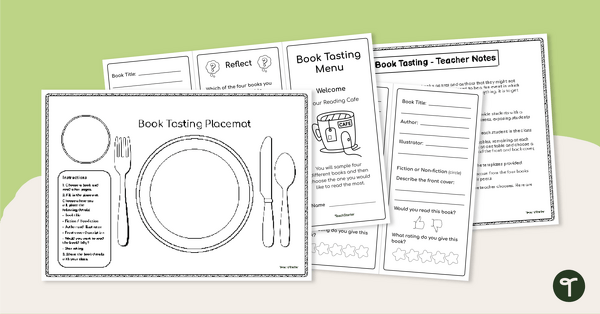
Book Tasting Placemat and Brochure Templates
Expose your students to new books, authors and genres with this student-centred book tasting activity.

Book Review Templates – Garden Theme
Create a display of student book reviews using this garden-themed book report template.
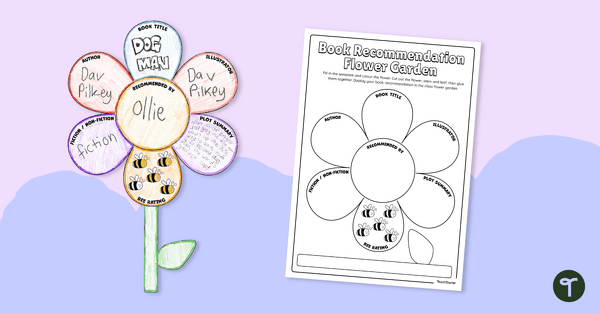
Book Recommendation Flower Garden - Template
Create a book recommendation flower garden with this easy-to-use template.

Book Review Bunting - Template
Share your students' favourite books during Book Week with a printable book review template in the shape of bunting.
So What Do You Think? Writing a Review

- Resources & Preparation
- Instructional Plan
- Related Resources
Teenagers are often outspoken and opinionated. Writing reviews of the literature they read gives them a chance to express their ideas while developing style and voice. This lesson uses discussion of student opinions about yesterday's lunch or a popular TV show serves as an introduction to the genre of reviews. Students then read and analyze conflicting reviews. After examining samples of movie, music, restaurant, and book reviews, students devise guidelines for writing interesting and informative reviews. They then produce their own reviews of the literature they're reading in class. Finally, students compare their ideas and their pieces with published reviews of the same piece of literature. Though this lesson is illustrated with examples from student and professional reviews of Raymond Carver's writing, the techniques can be used with whatever literature students are reading.
Featured Resources
Components of a Review : This handout gives an overview of what is normally included in a critical review.
Review Guidelines : Students can use these guidelines when writing their own critical reviews.
From Theory to Practice
While it's important for students to learn to read and evaluate critical commentary, "Each reader has a right-and even a responsibility-to form his or her own opinions, based on that reader's reading and understanding of a piece of literature, and to be able to support those opinions with solid reasons" (97).
When students express ideas on an author's work that are also noted by critics, "it presents a perfect opportunity to introduce critical commentary naturally into class discussion in order to promote a deeper understanding of the literature" (100).
Further Reading
Common Core Standards
This resource has been aligned to the Common Core State Standards for states in which they have been adopted. If a state does not appear in the drop-down, CCSS alignments are forthcoming.
State Standards
This lesson has been aligned to standards in the following states. If a state does not appear in the drop-down, standard alignments are not currently available for that state.
NCTE/IRA National Standards for the English Language Arts
- 1. Students read a wide range of print and nonprint texts to build an understanding of texts, of themselves, and of the cultures of the United States and the world; to acquire new information; to respond to the needs and demands of society and the workplace; and for personal fulfillment. Among these texts are fiction and nonfiction, classic and contemporary works.
- 3. Students apply a wide range of strategies to comprehend, interpret, evaluate, and appreciate texts. They draw on their prior experience, their interactions with other readers and writers, their knowledge of word meaning and of other texts, their word identification strategies, and their understanding of textual features (e.g., sound-letter correspondence, sentence structure, context, graphics).
- 4. Students adjust their use of spoken, written, and visual language (e.g., conventions, style, vocabulary) to communicate effectively with a variety of audiences and for different purposes.
- 5. Students employ a wide range of strategies as they write and use different writing process elements appropriately to communicate with different audiences for a variety of purposes.
- 6. Students apply knowledge of language structure, language conventions (e.g., spelling and punctuation), media techniques, figurative language, and genre to create, critique, and discuss print and nonprint texts.
- 7. Students conduct research on issues and interests by generating ideas and questions, and by posing problems. They gather, evaluate, and synthesize data from a variety of sources (e.g., print and nonprint texts, artifacts, people) to communicate their discoveries in ways that suit their purpose and audience.
- 8. Students use a variety of technological and information resources (e.g., libraries, databases, computer networks, video) to gather and synthesize information and to create and communicate knowledge.
- 9. Students develop an understanding of and respect for diversity in language use, patterns, and dialects across cultures, ethnic groups, geographic regions, and social roles.
- 12. Students use spoken, written, and visual language to accomplish their own purposes (e.g., for learning, enjoyment, persuasion, and the exchange of information).
Materials and Technology
- Sample reviews of various types (movie, music, restaurant, book, etc.), both print and online
- Specific reviews of the literature students are reading
- Components of a Review
- Creating Classroom Discussion about Reviews
- Student Example of a Book Review
- Review Guidelines
- Writing a Review Checklist
- Student Reflection Sheet
Preparation
- two conflicting reviews of a current movie, television show, or CD with which students are likely familiar.
- reviews specific to the writer(s) who students are reading. The Stauffer Library Reference and Book Reviews in the Yahoo! Directory may be helpful in finding those reviews.
- Make appropriate number of copies of handouts.
- Test the ReadWriteThink Pinting Press on your computers to familiarize yourself with the tool and ensure that you have the Flash plug-in installed. You can download the plug-in from the technical support page.
Student Objectives
Students will
- read a variety of different kinds of reviews.
- determine the qualities and characteristics of an effective review.
- use critical thinking skills to formulate their own opinions about a writer's work.
- apply their knowledge to write their own reviews.
- compare their ideas and their work to that of professional reviewers.
Session One
- In this first class session, work to generate interest in writing a review-and to convince students that they do have strong and valid opinions.
- If lunch was "gross," what made it so?
- If the show was "really funny," why did it make them laugh?
- Ask students why they go to certain movies, buy specific CDs, or choose to eat in particular restaurants. Encourage them to explore where they get their "recommendations" from.
- Invite students to share both positive and negative experiences they have had as a result of listening to someone else's opinion.
- Lead the discussion to a point where students begin to see that word-of-mouth recommendations and published reviews essentially serve the same purpose: to comment on and evaluate a work or an event.
- Share two conflicting reviews with students.
- the kind of information included in both reviews.
- the specific points the reviewers agree and disagree about.
- any differences in focus between the reviews.
- which review is more entertaining—and why.
- which review is more convincing—and why.
- Ask students to list various kinds of reviews and to suggest where they can find these reviews (newspapers, magazines, journals, and online).
- For homework, ask each student bring one to three reviews to class.
Session Two
- In this second session, focus on helping students determine the qualities and characteristics of a good review.
- the name of what is being reviewed
- a clear statement of the reviewer's opinion (i.e., a thesis)
- specific examples that support the reviewer's opinion
- a particular tone (use of humor, sarcasm, authority, etc.).
- book reviews may include quotations from the work.
- restaurant reviews may discuss atmosphere.
- both music and literary reviews may trace developments in the writer/musician's history.
- Each small group should choose one review to read to the class along with their own short oral analysis.
- As a conclusion to the activity, the class as a whole should compile a list on the board or on chart paper of qualities that contribute to a good review. If desired, share the Components of a Review handout, which reviews the parts of a review.
- The teacher should collect all reviews students brought in for homework for use in future sessions.
Session Three
- In this third session, work to get students to focus on the particular attributes of a book review in preparation for writing their own reviews of the literature they're reading.
- Ideally, the teacher should have a selection of book reviews from those collected from students the previous day. In case students have not brought in book reviews, the teacher should have such reviews available. These reviews should be carefully chosen so that their content is accessible to students. It's best if some reviews focus on works students may have read while others are of work unfamiliar to students.)
- In small groups of three or four, have students examine a book review and break it down into its components to determine how the introduction, the body, and the conclusion allow the writer to make his/her points.
- Next, students should examine the particular style of their group's review and determine how the writer achieves a unique voice. Each group should try to determine the tone of their review (i.e., pompous and authoritative, humorous, enthusiastic, analytical, etc.) by noting such things as word choice, sentence structure, and use of detail. If students have collected reviews written by the same reviewer, these "elusive" qualities may be easier to spot.
- Invite a class discussion about how a review combines the informative aspects of straight journalism with the "pizzazz" of personal narrative.
- Where did your review appear?
- What do you know about this publication?
- Who do you think the audience for this publication would be?
- What would a reader who had read the book take from the review?
- What would a reader unfamiliar with the book take from the review?
- By the end of the session, ask students to compile a class list of broad, basic guidelines for writing a review. Example guidelines are also available.
- Invite students to begin writing the first draft of a review based on the particular piece(s) of literature the class is studying.
- If students are reading one book, that one work would be the focus of the review.
- If students are reading more than one work (i.e., a number of short stories, poems, or essays) by an author, the review can cover any or all of this material.
- Ask students to design a rating system to include with the written review. The system can be as traditional as 1-5 stars or something more creative.
NOTE: Older students tend to get the style and tone of a review quite quickly, while younger students often produce something more like a book report in the early drafts. Writing instruction should be geared to the ability of each class.
- Use the Writing a Review Checklist as a guide to help students draft and edit their reviews.
Session Four
- In this fourth session, introduce critical commentary into class discussion.
- When the students have completed their reviews, invite them to publish their reviews using one of the options on the ReadWriteThink Printing Press . Print them when they are complete.
- With their final drafts complete, have students read professionally written reviews on the same text and compare their ideas as well as their writing to these reviews. Depending on the accessibility of these reviews, you can collect all published material or students can be assigned this task. (It's for this reason that this aspect of the assignment works best if the writers reviewed are contemporary.)
- When comparing their reviews with the published pieces, students should find points that are raised in both. This process demystifies critical commentary and allows students to feel comfortable discussing the work of reviewers. For example, one of my students writes of his appreciation of Carver's "deadpan humor."
- Teachers can use such excerpts to generate lively classroom discussion. If desired, use the this suggestion for creating a classroom discussion.
- After all students have reacted to each excerpt, invite the class to break into pairs or small groups, with each group responsible for sifting through the material on one of the papers.
- Finally, have students present conclusions based on their peers' responses to the critical commentary.
- a classroom bulletin board displaying reviews, accompanied by artwork and photographs of the authors.
- a class compilation of reviews. Students can use the ReadWriteThink Printing Press to compile their reviews in a reader-friendly format.
- a class publication with all reviews collected in a booklet, brochure, or binder and saved for future classes who will be studying the same author. This collection can be added to over the years to create an "historical perspective" on a particular works/authors.
- submissions to print and online publications that seek reviews. (Note: Teen Ink seeks student written reviews on all topics.)
- writing an individual response to a review to then share with the class.
- revising and rewriting their own original reviews to address points raised by the professional reviewer.
- working with a partner and each taking a side in response to a review, with one student proving the reviewer is "right" and the other proving him/her "wrong."
- When students are comparing different types of reviews, invite them to use the Venn Diagram interactive.
Student Assessment / Reflections
- Grade the review as a complete writing assignment.
- As students write and revise their reviews, guide their work with the Review Checklist , a worksheet that outlines the vital features of a good review and asks students to verify that their final review includes these specific features. This checklist can be used by the teacher in evaluating the review.
- Students can assess their own work and learning by completing a Reflection Sheet that is handed in with the review. As with all reflection sheets, the form should include 4–5 questions that make writers really think about their pieces and the process that led to their creation.
- Publish student reviews using one of the options listed above to provide further feedback and assessment for students.
- Calendar Activities
- Professional Library
- Student Interactives
- Lesson Plans
The interactive Printing Press is designed to assist students in creating newspapers, brochures, and flyers.
Add new comment
- Print this resource
Explore Resources by Grade
- Kindergarten K
- AI and Education
- Back to School Resources
- Dream Sweepstakes
- AFT Book Club
- Featured This Month: Back to School: First Day of School and Beyond
- Elementary (Grades K-2)
- Elementary (Grades 3-5)
- Middle School
- High School
- Higher Education
- Adult Education
- Professional Development
- Paraprofessional and School Related Personnel (PSRP)
- Specialized Instructional Support Personnel (SISP)
- Career and Technical Education
- Digital Literacy and Citizenship
- English Language Arts
- Health and Wellness
- Learning Through Play
- Media Literacy
- Physical Education
- Professional Learning
- Social Emotional Learning
- Social Studies
- Special Education
- World Languages and Cultures
- AFT Members
- Collections
- Communities

Back to School: First Day of School and Beyond

Book review

About This Lesson
A simple template for completing a book review. This includes sections to write about what they liked and didn't like; explaining what the book was about; and giving it a star rating.It may be used for both fiction and non-fiction books.
book_review_simple[1].doc

Be the first to submit a review!
More from this Contributor

Zoo animal posters
Presentation | Grades K-2

The 5 senses display

Crack the codes
Handout, Worksheet | Grades K-2

Post Office role-play
Activity | Grades K-2

Support for Spelling Planning
Lesson Plan | Grades K-5

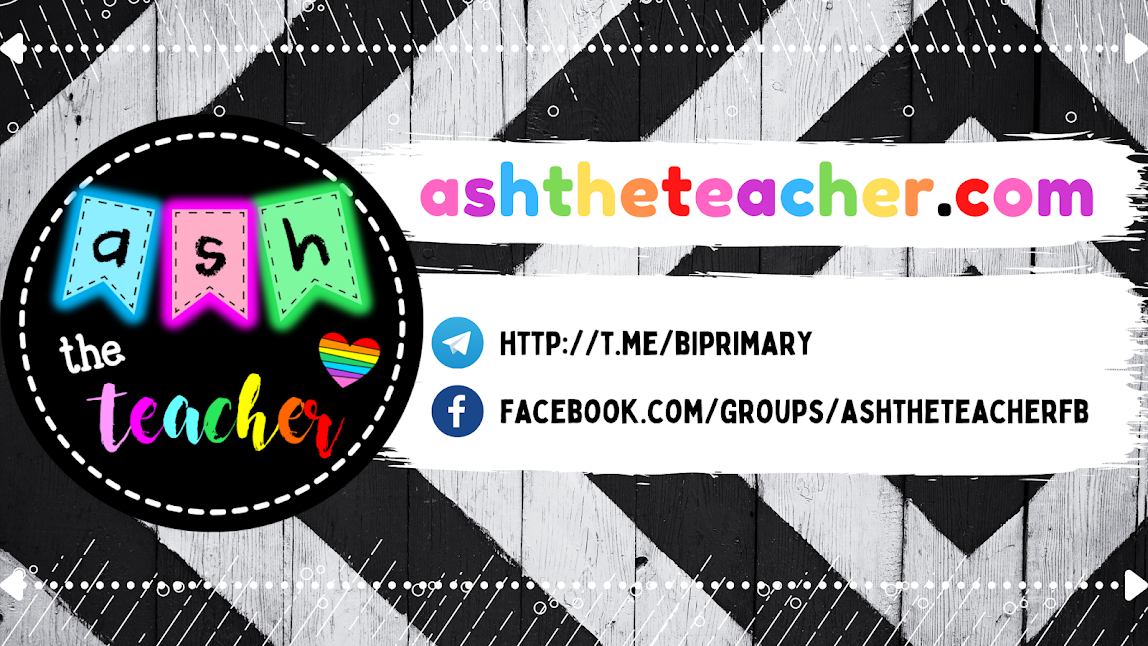
DISCLAIMER: All the lesson plans shared here are my sample lesson plan suggestions based on the materials that I've shared. You can definitely opt to modify or not use the materials. Everything here is shared for PERSONAL usage only Therefore, materials, lesson plans or modules from this blog cannot be sold by any means. For any inquiries, do contact me via [email protected]
- CIVIC LESSONS

73 comments:
tq for sharing. you're amazing!

Oh my!!! Thank you so much for your kind words!!!

tq teacher fot the sharing
Thank you so much Miss Ash! brilliant!!!
Welcome!!!!

Tq for sharing. Really helpful
Pleasure is mine ya.
Pleasure is mine!
Thank you very much...
thank you very much. tersgt membantu time blur nak buat activities.

thank you ash. all the best
tq Ash..u r amazing!
Thank you, Thank you, Thank you U r amazing...
TQVM Miss Ash. You are great
Thanks for sharing the materials.
Thank you for sharing
Thank you teacher..
thank you miss Ash..you are the BEST
Thanks for sharing the assessments for year 1 and year 2. Now Miss Ash, when you update the August assessments for year 2
So sorry for the delay! Just updated ya.
THANKS A LOT, mISS ASH.. rEALLY HELPFUL
Tq for sharing...really helpful....may Allah bless u and your family...
such a kind creature you are . keep doing it. May Allah bless u
Thank you teacher for sharing. May Allah bless u and your family.
Thank you Teacher Ash. You inspire me to do my own worksheet. I now look forward to collect cute icons and background. Do you create your own frames? Perhaps you can suggest several sites for me to use as my muse. Thanks.
Thank you for sharing this helpful article we hope listen you more ahead mitsoer
Thanks for sharing the exams paper. May God Bless You Always
thank you miss ash.
Thanks A lot!
Thank you Teacher Ash. I hope i can create a blog like this too. Very Helpful! Saham dunia akhirat
This comment has been removed by the author.
Thanks for sharing teacher. Its very helpful also for me.

many thanks for you
Thank you teacher Ash.
hello teacher ash.. can i have any sample of checklist for year 1 listening skill?
Thanks miss ash
Thank you teacher....may Allah bless you
Thanks miss Ash...May Allah bless u...
Thanks a million Ms Ash. Im using the materials to tutor my kids.
Thank you very much Ms Ash. Im new in teaching English Yr 2. I love your sharing to bits. TQ..
Terima kasih cikgu Ada skema jawapan bagi ujian tersebut
Tq teacher, May Allah bless you always.. aamiinn..

Thank you for the materials you've shared. They have certainly eased my burdens. Forever indebted to you. God bless.
Thank you so much teacher. Very helpful.
Thank you so much for sharing Teacher Ash.
Thank you. You make my life easier. May Allah bless you always.

thank you teacher.. this help me a lots.
thanks teacher..

Thank You Teacher... May Allah bless you for sharing this kindness..
Thank You Miss ash..... "MAY GOD BLESS YOU WITH GOOD HEALTH AND WEALTH"
Thank you very much miss Ash.May Allah set always bless you. .
Thank you miss ash ❤️
thank you so much for the sharing. May Allah bless you with all the good things in life and insyaAllah, bless you with unending pahala. Your hardwork and kindness to help other educators has ease me to teach my students. Alhamdulillah
Thnx teacher.. You help me a lot.
Thanks teacher for sharing. Allow me to use the materials with my pupils. May Allah ease everything for you
Thank you for all these wonderful materials.
thank you Miss Ash.. You're very helpful.. May Allah blessed you with good health and ease your journey dunya and akhirah..
Get free python projects in tutor ash.
its very useful. Thanks a lot
tq so much for the material. its really useful.

Thank you Miss Ash 🌹 May Allah SWT bless you..
Tqvm, Ms Ash... God Bless you
Thank you miss ash...may Allah bless you ❤️❤️❤️
thanks for the materials...may Allah bless you..very good job...
I love wock it is so simpel thak you
I'm a fresh grad teacher that was trained for secondary school. but I got primary school. I was so lost on how i am supposed to teach these kids. Your materials are a great guidance!! Thank you so much Teacher Ash!! Your a real life saver.
Thank you Miss Ash.. May Allah grant you happiness till jannah with everything that you do.. Aaminn YRA (From Sabah with love)
Tqvm Miss Ash..very helpful person..May ALLAH bless you

IMAGES
COMMENTS
Age range: 5-7. Resource type: Worksheet/Activity. File previews. doc, 34 KB. doc, 32 KB. doc, 25.5 KB. Here are 3 versions of a book template which I adapted to my year 2/3 class. It looks at who they think would like it, what their opinion of the book is, whether it is fact or fiction and a 5 star rating.
Help KS2 learners to write a comprehensive book review using this template as a guide to help organise their ideas. ... 2014 National Curriculum Resources English Key Stage 1 - Year 1, Year 2 Year 2 Reading Comprehension Year 2 Explain and discuss their understanding of books, poems and ... Lesson Plans; Phonics Schemes of Work; PE Planning ...
Examples: Learn from the efforts of others. Learning how to write strong reviews takes time and not a little effort. Reading the reviews others have done can help you get a feel for the flow and flavor of reviews. If I Never Forever Endeavor. Review by Hayden, age 4, Southeast Michigan Mensa.
Help teach your KS2 classes how to write book reviews (KS2) by using our extensive range of book review examples. ... Year 2 . 7 - 8 years old . Year 3 . 8 - 9 years old ... Take a look around this collection and piece together a brilliant lesson plan simply and easily that perfectly matches the needs and learning styles of your students.
Lesson Plan Title: Book Reviewer. Concept / Topic To Teach: Understand and comprehend as they read a book. The student will be able to write and understand how to do a basic book review. Standards Addressed: 3.4 The student will use strategies to read a variety of fiction and nonfiction materials. a) Preview and use text formats.
This easy-to-use book review template is great for helping children structure book reviews and get comfortable with writing and analysing their reading. ... Year 2 . 7 - 8 years old . Year 3 . 8 - 9 years old . Year 4 ... Lesson Plans; Phonics Schemes of Work; PE Planning; EYFS Planning Materials;
Age range: 7-11. Resource type: Worksheet/Activity. File previews. doc, 33.5 KB. These two Book review templates,will help your pupils to start to building great book reviews of their own in no time. The first form, guides them with questions to answer. Once confident they can progress to the second sheet which is blank. Sheets are graded for KS2.
For a more interactive approach, try our Pencil Shaped Interactive Book Review Writing Template and get them practising their motor skills with paper folding as well. Congratulate your children on their reading by using these reading certificate templates. Or to see our entire range of Year 5-6 resources for English Literacy, just visit our ...
A general guideline is that the longer the book, the longer the review, and a review shouldn't be fewer than 100 words or so. For a long book, the review may be 500 words or even more. If a review is too short, the review may not be able to fulfill its purpose. Too long, and the review may stray into too much plot summary or lose the reader's ...
Overview. Designed for students in grades 2 and 3, this lesson demonstrates the process for writing book reviews and offers ideas for publishing student reviews. Students begin by evaluating book reviews written and read aloud by other children. Next, students discuss the effectiveness of, what components are included in, what they learned from ...
Year 2 . 8 - 9 years old . Year 3 . 9 - 10 years old . Year 4 . 10 - 11 years old ... Lesson Plans ; eBooks ; PE Units ; Segments ... This KS2 book review template is a great resource to use in your classroom to encourage conversation about reading. Simply print enough copies for your class and help them to complete the worksheet individually ...
The real value of crafting a well-written book review for a student does not lie in their ability to impact book sales. Understanding how to produce a well-written book review helps students to: Engage critically with a text. Critically evaluate a text. Respond personally to a range of different writing genres.
A book review and summary card for comprehension learning. This t eaching resource is a one-page book review that can be used to summarise guided reading stories or be included as part of your class novel study. This resource is a great way to exercise students' comprehension skills and allow them to review what they are reading.
Overview. Teenagers are often outspoken and opinionated. Writing reviews of the literature they read gives them a chance to express their ideas while developing style and voice. This lesson uses discussion of student opinions about yesterday's lunch or a popular TV show serves as an introduction to the genre of reviews.
Help KS2 learners to write a book review using this template as a guide to help organise their ideas. ... Year 2 . 8 - 9 years old . Year 3 . 9 - 10 years old . Year 4 ... Lesson Plans ; eBooks ; PE Units ; Segments
Our book review templates' simple design is perfect for KS1 students learning how to write a book review. Each main section is laid out with prompts to make sure that your students think about all the key elements when writing their book review. Thank you . A simple layout which can be adapted for VI library students.
A simple template for completing a book review. This includes sections to write about what they liked and didn't like; explaining what the book was about; and giving it a star rating.It may be used for both fiction and non-fiction books. ... Lesson Plan | Grades K-5. Read More. Created and maintained by the American Federation of Teachers ...
Level 1 Speak Out Challenge. YEAR 2 PAST YEAR EXAMS. Year 2 First Assessment Paper 1 & 2. Year 2 Mid Year Assessment Paper 1 & 2. Year 2 3rd Assessment Paper 1 & 2. Year 2 Finals Paper 1 & 2. PHONICS MODULES. (all the phonemes for Year 1 & 2) LISTEN & WRITE MODULE.
Information Report Checklist. Level 3 Writing - Information Report Checklist. Writing Frame - Planning a Report. Level 3 (Phase 2) Writing - Information Report Exemplar with Annotations. Use this checklist to assess your year 2 students' strengths when writing a book review which includes the required features.
Twinkl Australia F - 2 Australian Curriculum Resources English Planning and Assessment. Level 3 (Phase 2) Writing - Information Report Exemplar with Annotations. Use this checklist to assess your year 2 students' strengths when writing a book review which includes the required features.